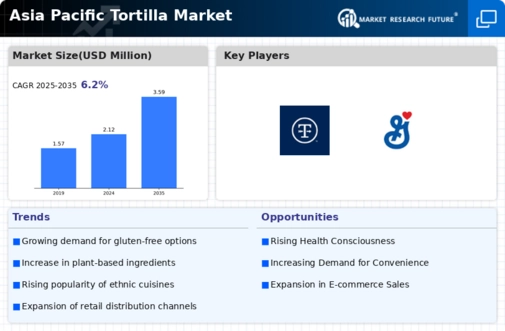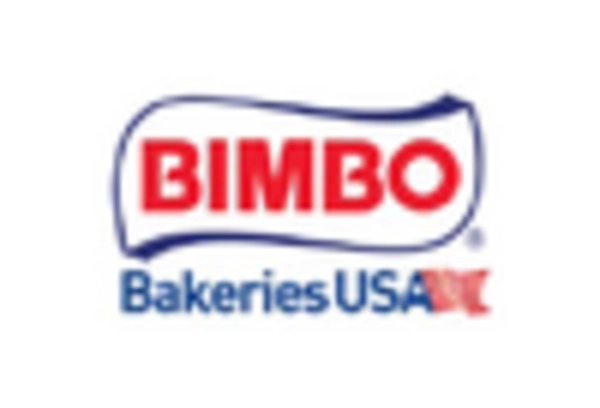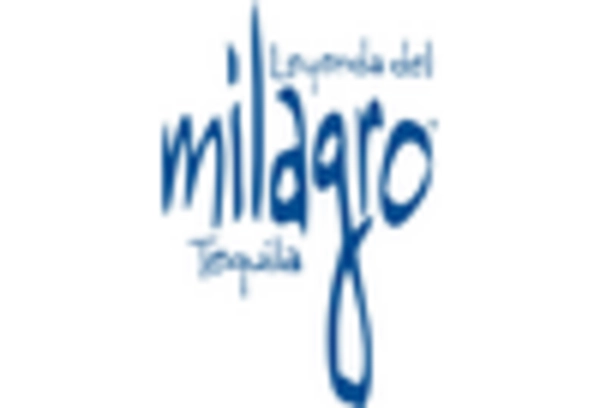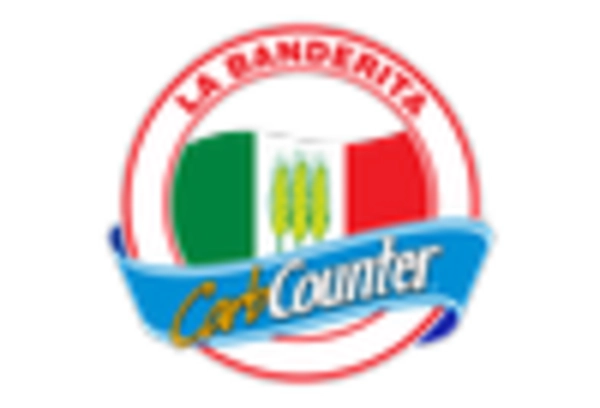Market Analysis
In-depth Analysis of Asia Pacific Tortilla Market Industry Landscape
The Asia Pacific tortilla market reflects a dynamic and evolving landscape, influenced by various factors that collectively shape its growth trajectory. One of the key drivers propelling the market is the increasing acceptance and incorporation of diverse cuisines within the region. As globalization continues to bring cultures together, consumers in the Asia Pacific region are becoming more adventurous with their food choices, leading to a growing demand for Mexican and Tex-Mex cuisines. Tortillas, as a staple in these culinary traditions, are witnessing a surge in popularity. The changing lifestyle and dietary preferences of consumers contribute significantly to the market dynamics of tortillas in the Asia Pacific. With urbanization and busier lifestyles, there is a rising demand for convenient and ready-to-eat food options. Tortillas, being a versatile and convenient choice for wraps, tacos, and quesadillas, align with this trend. The market experiences a shift as consumers seek quick and easy meal solutions without compromising on taste or nutritional value. Health and wellness considerations play a crucial role in shaping the market dynamics of the tortilla industry in the Asia Pacific region. As awareness about healthy eating habits grows, consumers are actively seeking products with better nutritional profiles. Tortilla manufacturers respond by introducing whole wheat and multigrain options, catering to health-conscious consumers who prioritize fiber and nutritional content. This focus on health impacts purchasing decisions and influences the overall market trends. The competitive landscape is a significant factor in determining the market dynamics of the tortilla industry. Established brands often dominate the market, leveraging their reputation and distribution networks. However, the market also sees the emergence of local and niche players who introduce innovative flavors, textures, or specialized tortilla products to capture specific consumer segments. This competition fosters creativity and diversity in the market, offering consumers a broader range of choices. Supply chain dynamics play a critical role in the tortilla market, particularly in the Asia Pacific region, which often involves the sourcing of key ingredients such as wheat and corn. Factors like weather conditions, geopolitical events, and transportation costs can impact the availability and pricing of these ingredients, introducing an element of uncertainty into the market. Manufacturers need to navigate these challenges adeptly to ensure a stable supply chain and meet the growing demand for tortilla products. Consumer education and awareness campaigns also contribute to the market dynamics of tortillas in the Asia Pacific. As consumers become more informed about the origin of ingredients, production methods, and the cultural significance of tortillas, their purchasing decisions are influenced by factors beyond just taste. Manufacturers engage in transparent communication to build trust and meet the growing demand for authentic and responsibly produced tortilla products.

















Leave a Comment